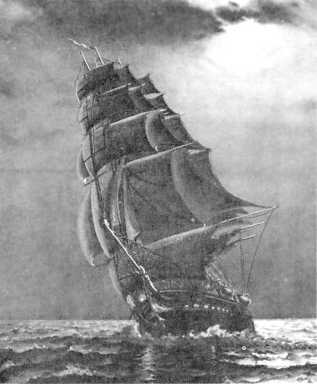| |
WAR WITH FRANCE
SIGNIFICANT DATES
14 Jul. 1813
LT John M. Gamble, USMC,
becomes first Marine officer to
command a ship in battle.
10 Sep. 1813 Oliver Hazard Perry, in Battle of
Lake Erie, defeats a British naval
squadron for the first time in
history.
8 Jan. 1815
United States wins Battle of New
Orleans.
22 Mar. 1820 Commodores Stephen Decatur
and James Barron duel near
Washington, D.C., resulting in
Decatur’s death. Dueling in the
Navy is outlawed following that
incident.
16 Dec. 1835 Greatest fire in history of New
York City occurs; firemen are
aided by the Navy and Marines.
14 Feb. 1840 Several officers and mascot dog
from USS Vincennes relax on
floating ice after arriving in
Antarctic regions; they are first
Americans to enter that region.
After the revolutionary war, the fortunes of the
navy declined, and by 1785 its last ship had been
sold. Little remained except fighting traditions.
When the U.S. Constitution went into effect in
1789, the War Department was charged with
directing both the army and the navy. At that time
these forces consisted of only a few hundred
soldiers and no ships or marines.
This absence of naval strength soon proved
disastrous because Barbary pirates began cap-
turing our merchant ships and imprisoning their
crews. In 1794 public sentiment moved Congress
to authorize the building of six frigates to protect
our interests. Thus, the United States Navy was
permanently established under the Constitution.
The makers of naval tradition during this
period were responsible for some vast improve-
ments in our conventional Navy. These improve-
ments, which helped to make the Navy more
powerful, included more advanced ship designs
and better leadership.
JOSHUA HUMPHREYS
President
Washington
appointed
Joshua
Humphreys, a Philadelphia Quaker, to design the
first six frigates of the new U.S. Navy. He thus
became our first naval constructor. A technical
genius, Humphreys was also a farseeing student of
naval history who exerted a tremendous influence
upon the U.S. Navy. He believed our “vessels
should combine such qualities of strength,
durability, and swiftness of sailing, and force as to
render them superior to any frigate belonging to
the
European
Powers.”
Departing
from
conventional standards, he designed the best
frigates that sailed the seas—frigates that could
run or fight at will and fight on their own terms.
His chief innovations provided for heavier
batteries; thicker timber; finer lines; and longer,
stouter spars than those of frigates of other
powers. Several years later the Royal Navy paid a
compliment to Humphreys’ skill by constructing
frigates according to his designs. Humphreys drew
up plans for the six famous frigates, the United
States, Constitution (fig. 2-3),
134.5
Figure 2-3.-The new and radical USS
Constitution, built for speed and firepower,
helped to rid the Mediterranean of the
Barbary pirates.
2-5
|

